Let’s say you’ve just purchased one of our pre-drawn net zero house plans and are now looking at how you want to finish it off. In our previous article, we discussed five sustainable interior design choices you could make to help create a healthy, water efficient and energy efficient home. Well, we have five more interior design choices for you that focus on healthy indoor air, energy efficiency and reducing your carbon footprint!
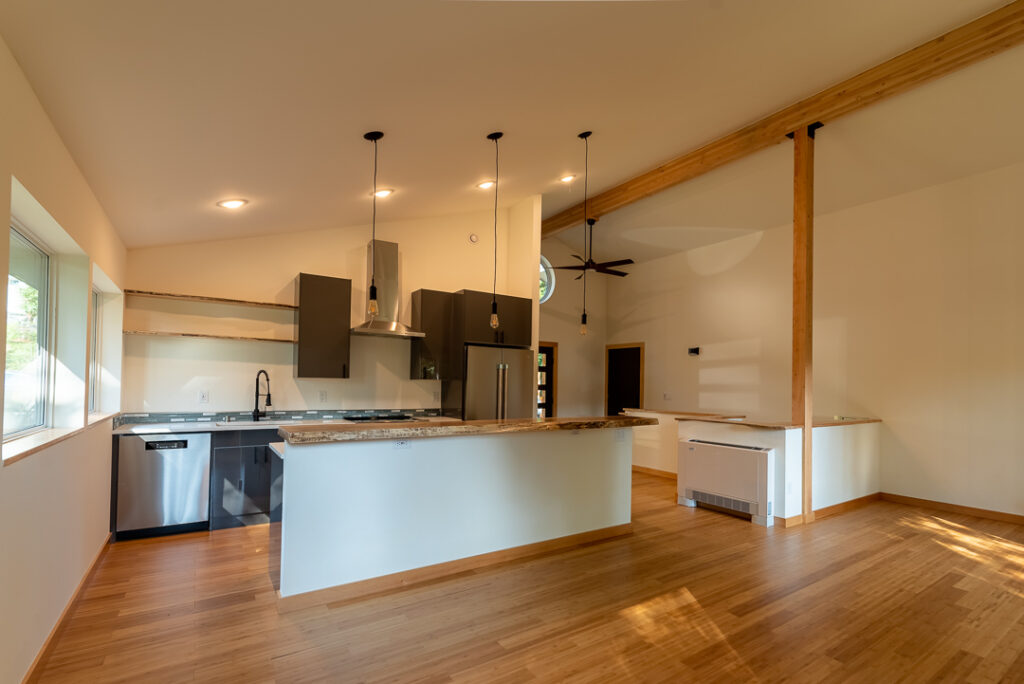
1. Hardwood Before Vinyl
We’ve seen that LVP (luxury vinyl planks) are all the rage these days – and for good reason! They’ve come a long way over the years in replicating the look of hardwood and are fairly sturdy to wear and tear. However, the truth about any vinyl planking is that they are awful for the environment, as well as you, and your fur or human baby’s, health. Vinyl planks are made of…vinyl, which is an innately toxic product. Remember the train that derailed in Ohio in February 2023 and caused a huge spill of toxic chemicals? The chemical on that train was vinyl chloride, aka the chemical compound needed to create all vinyl products. Not only is the production of vinyl flooring dangerous and toxic, but after it’s been made and is in your home, it’s going to off-gas VOC’s and as it wears, the microplastics produced can be ingested or inhaled, especially by those closer to the ground like your kids and pets. Now, some LVPs are low or no VOC, and if you have to buy LVP, then that’s the option you should go with. However, the best option for your home is some kind of hardwood, whether that be engineered or solid. We recommend bamboo as the best alternative to LVP, as it can be found at similar costs, is one of the hardest wood flooring you can buy, has a lower carbon footprint and overall impact on the environment. Plus, these days you can get bamboo that looks like other wood floors, so you won’t even know it’s bamboo. When searching for any flooring, be sure to look for one that is either GreenGuard certified or FloorScore certified. These certifications prove that the product won’t off-gas any VOCs into your new home!
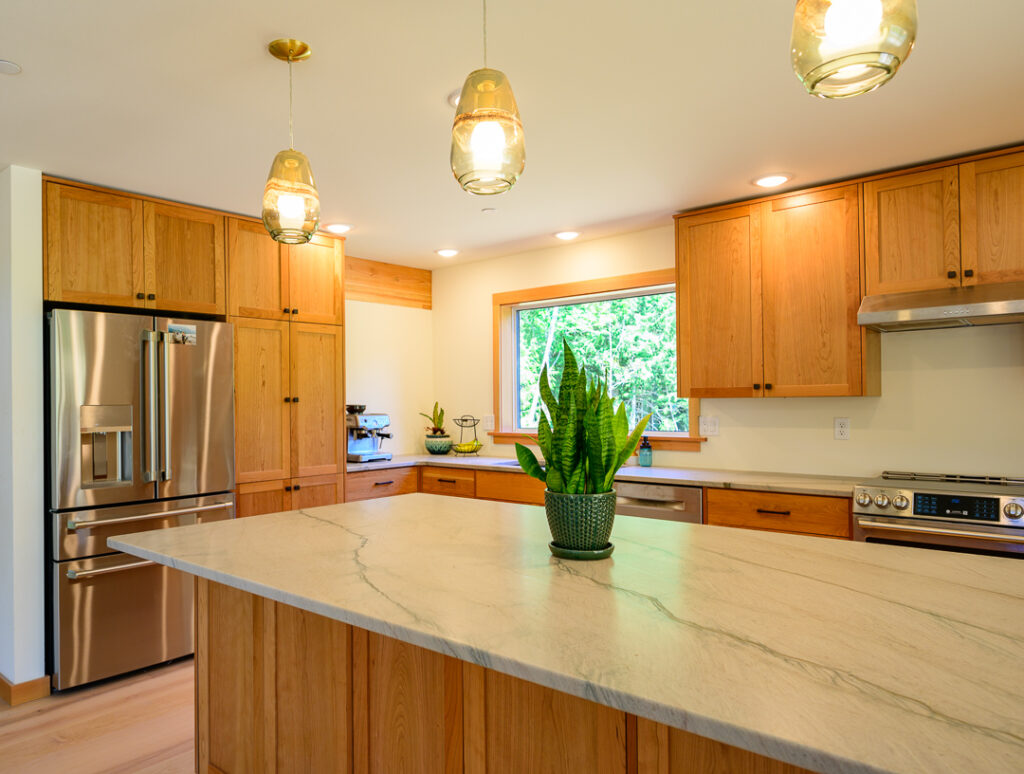
2. Local Cabinets (vs IKEA)
We know that cabinets can get expensive, so places like IKEA seem appealing with their low price tag. However, you’re paying for the lack of quality. Having installed our fair share of different cabinet types, we can say, with confidence, that these super inexpensive cabinets aren’t built to last and may not even last past installation. If you have your contractor install them, the end cost is going to be just as much as a middle-of-the-road to good quality cabinet because the installation is much more tedious, since they are flat packed and rarely plumb. Our recommendation is to try to buy cabinets from a local cabinet maker. When you use a local cabinet maker, the cabinets are going to be built much stronger and will last as long as the house. They will also likely use locally sourced wood. The combination of being locally made, made of locally sourced wood and having a long lifespan drastically reduces the cabinet’s overall embodied carbon and are therefore much more sustainable. All that being said, of course if your budget will only allow for the less expensive cabinets, then by all means, get whatever fits in your budget. But if you can move your budget around and add a bit more to the cabinets category, it will be well worth it to invest in locally-made cabinets. When you think about it, cabinets get a lot of use, and if you install ones that fall apart within a few years, you’re going to end up spending more in the long run and increasing your embodied carbon just that much more.
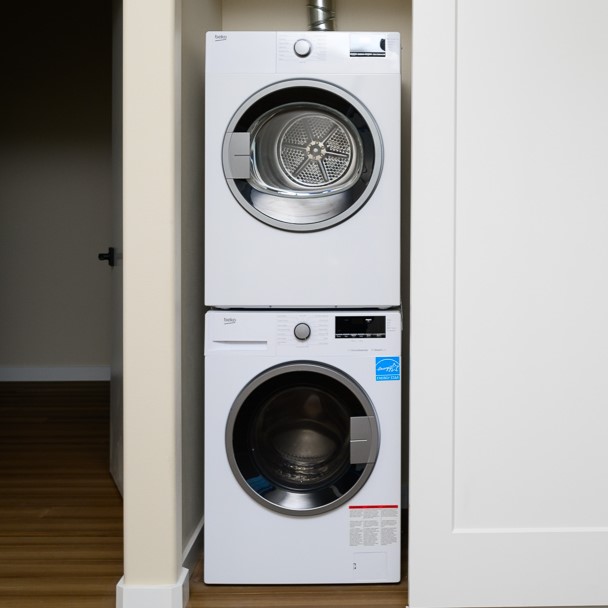
3. EnergySTAR Appliances
Many appliances these days are EnergySTAR rated, however not all of them are. It’s important to look for appliances that have this rating because your appliances draw a huge portion of the electricity in your home, and the EnergySTAR rating certifies that the appliance is energy efficient. If you’re able to take it even a step further and compare the actual energy usage of each appliance you’re considering, you’ll see that even within those that are EnergySTAR rated, there’s still a big difference on how much energy they can consume. So whenever possible, try to choose the more energy efficient of the bunch. Your wallet and the environment will thank you!
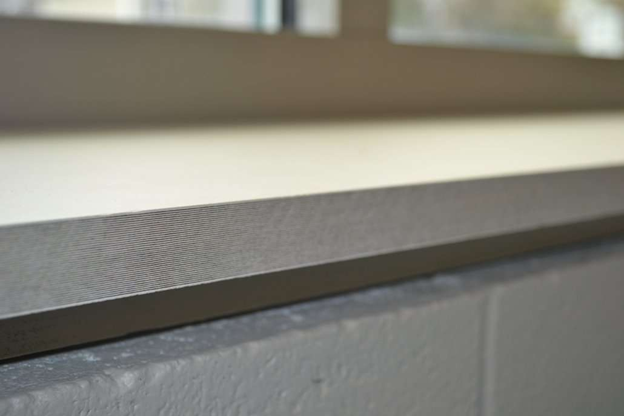
4. Stone Alternative Countertops
When choosing countertops, granite and quartz aren’t your only options. Typically speaking, granite and quartz/quartzite are not particularly environmentally friendly. Of the two, quartzite specifically is the better option as it requires less mining since it is a manufactured quartz and resin product. Therefore, it has a lower impact on the environment. But even better options are stone alternatives like PaperStone, marmoleum, butcher block, or recycled glass countertops. Paperstone is a hard surface made from recycled paper and natural resin. The stone is resistant to stains, water, bacteria and heat up to 350°. It can also be cut with your standard woodworking tools unlike quartz or granite. Marmoleum is a natural linoleum. It has similar characteristics to your typical linoleum, but is 100% non-toxic and naturally anti-microbial. Butcher block is of course just a wooden countertop, but these days there are so many more options than there used to be, including bamboo butcher block which is extra durable, non-toxic and bacteria-resistant. Lastly, recycled glass countertops are manufactured by many different companies and are made of recycled glass, acrylic or quartz suspended in concrete or binders. These countertops are extra durable and heat resistant. When choosing the right countertop for your home, be sure to consider which of these characteristics is most important to you!
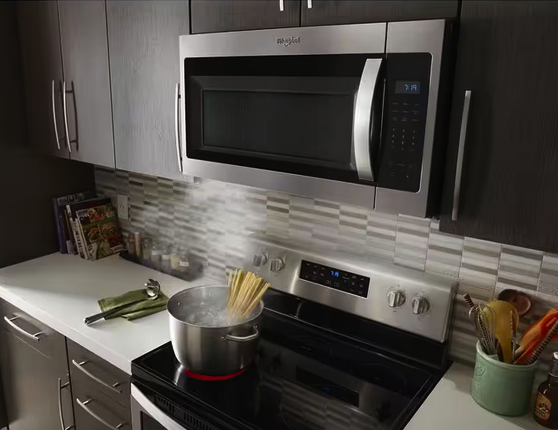
5. NO Microwave/Hood Combos!
You’re looking for a range hood and come across a microwave/range hood combo that’s mounted above a stove. Sure, they are space saver, but are they worth installing? Absolutely not. The exhaust fan integrated into the microwave does not do a good enough job of extracting the air and venting it outside. The point of a range hood is to exhaust all the airborne food particles, smoke and vapors that are created during cooking that are not good to inhale and contribute to poor indoor air quality. In order to effectively exhaust these from a house, you need a true range hood, not a 2-in-1 combo. Not to mention that the height that the microwave would have to be at is inconvenient and can be quite dangerous since you have to reach up to get hot food and dishware out of it. When looking for a true range hood, we recommend finding a 400cfm hood that vents outside. Never choose a hood that doesn’t vent outside otherwise the hood wouldn’t be able to do its job.
We’re Happy to Help
At Powerhouse Designs, we embrace the potential of net zero homes to create sustainable and efficient living spaces.
Whether you choose our ready-made net zero house plans or require a custom design tailored to your specific needs, our team of knowledgeable designers is here to guide you every step of the way. Building a net zero home is an inspiring journey that positively impacts both your lifestyle and the environment. Contact us today to start down your own net zero path!
